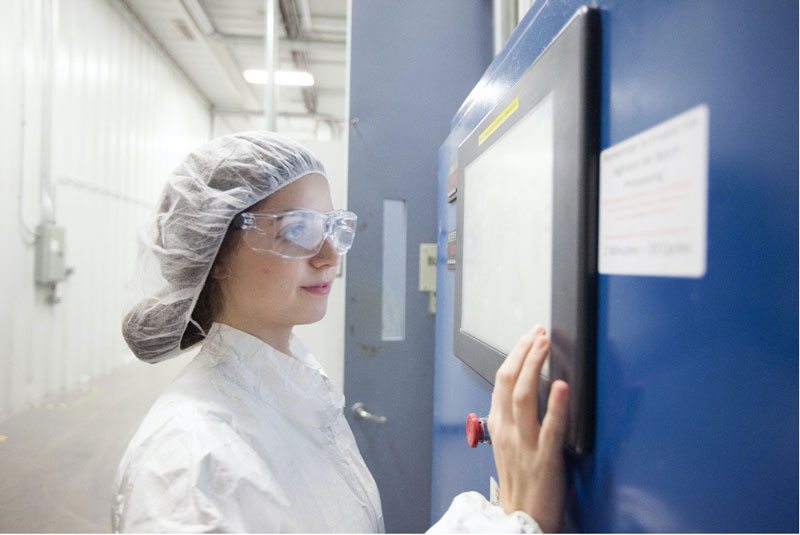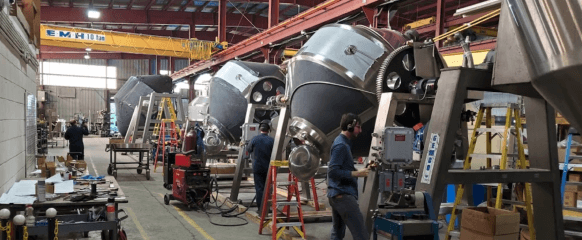Navigating Moisture Challenges in Powder Processing
Introduction
Moisture, often underestimated, plays a pivotal role in powder processing—an integral phase in industries like pharmaceuticals, food production, and chemical manufacturing. It is crucial to efficiently handle moisture during powder processing, to avert issues that can jeopardize product quality, process efficiency, and safety. This article explores the specific challenges moisture poses in powder processing and offers practical solutions tailored for technical professionals.
Challenges in the Spotlight
- Flowability and Cohesion Concerns
Moisture can transform powder materials, disrupting their smooth flow and cohesion. This can lead to blockages, separation, and ineffective mixing, causing downtime and compromising product quality.
- Electrostatic Challenges
Moisture intensifies charge generation within the powder, posing risks like fire hazards, equipment damage, and quality issues.
- Corrosion and Equipment Degradation
Moisture not only affects material properties but also harms processing equipment. Corrosion and equipment deterioration can impact process integrity and reliability, leading to inconsistencies in product quality.
The physical and chemical characteristics of powder materials, such as their cohesiveness, flowability, electrostatic behavior, and sinterability, can be changed by moisture. These modifications may lead to corrosion and deterioration, poor mixing, clogging, segregation, fire and explosion risks, and modifications in the characteristics of the final product. In order to guarantee the quality and functionality of the finished products, it is important to regulate and keep an eye on the moisture content of powders during processing and manufacturing.
Key Solutions
- Environmental Control: Rigorously manage temperature, humidity, and pressure during powder processing and storage to maintain optimal moisture content.
- Additive Integration: Introduce lubricants, binders, or antistatic agents to enhance flowability, compressibility, and sinter ability, improving overall powder behavior.
- Static Dissipators: Employ grounding, ionization, or humidification techniques to neutralize electrostatic charges, ensuring safety and preventing charge buildup.
- Protective Coatings: Apply corrosion inhibitors, antioxidants, or passivation layers to prevent corrosion and degradation, preserving material and equipment integrity.
- Process Parameter Maintenance: Adhere to precise pressure, temperature, time, and atmosphere during compacting and sintering for consistent product quality.

Understanding Moisture’s Impact on Static Electricity
Moisture can have both positive and negative effects on static electricity in powder processing. On one hand, it can decrease friction and triboelectrification, acting as a lubricant and conductor. Additionally, moisture increases the conductivity and dielectric constant of the powder, facilitating charge dissipation and preventing the accumulation of static charges. However, moisture can also increase adhesion and cohesion among powder particles, impairing flowability and efficiency. It can also lead to corrosion and equipment degradation, affecting material properties and charge transfer characteristics. To maintain product quality and safety, it is imperative to control and monitor the moisture content during powder processing.
Conclusion
Moisture significantly influences the flowability of powders, a critical aspect of their performance under stress. Even slight changes in moisture content can enhance or impair flowability, depending on factors like type, amount, and distribution within the powder. Environmental conditions and processing parameters play a crucial role, underscoring the need for precise control in powder processing.
Moisture is a crucial factor in powder processing that affects product quality, process efficiency, and safety. Technical professionals need to understand the challenges and implement tailored solutions to optimize powder processing methods and ensure the reliability of final products. Moisture content must be monitored and controlled diligently, as it can make or break successful runs. This is the key to achieving excellence in this technical landscape.


